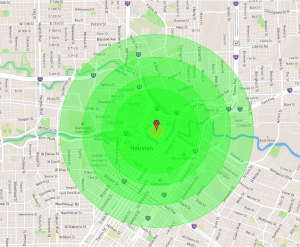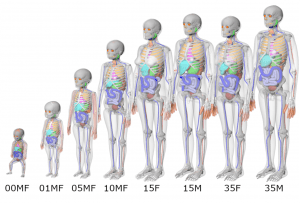In the event of exposure or dose construction involving an improvised nuclear device (IND), RED² Ph.D. students Andrew Rosenstrom and Ethan Asano used the latest computational human phantom models from University of Florida/National Cancer Institute series and Monte Carlo radiation transport code to compute organ dose coefficients from the prompt neutron and gamma-ray fields from an IND. Results were recently published in a peer-reviewed journal manuscript in the journal, Radiation Research, in collaboration with Keith Griffin and Dr. Choonsik Lee at the National Cancer Institute and Dr. David Hooper at Oak Ridge National Laboratory.

In this work, the voxel phantom series including newborn, 1-, 5-, 10-, 15-, and 35-year-old male and female models based on International Commission on Radiological Protection physiological parameters were used to compute organ and effective dose coefficients. Dose coefficients have prior been calculated for epidemiological purposes specifically to the studied population from the 1945 Japanese cohort. Dose assessment using the lastest models in radiation protection have not yet been harnessed to provide an assessment for a more representative reference population.

Source irradiation was simulated using Monte Carlo N-Particle transport code version 6.2 to determine organ dose coefficients under four idealized irradiation geometries at three distances from the detonation hypocenter at Hiroshima and Nagasaki using the corrected DS/02 free-in-air prompt neutron and photon fluence spectra as a representative surrogate source term of a low-yield IND. Through these simulations, age-specific dose coefficients were determined for individual organs.

The effect of posture were additionally simulated to determine the effect of posture on dosimetric estimation and reconstruction, drawing upon prior work by RED² .
Results demonstrated that that Cs-137 and the Watt fission spectrum are not ideal general surrogate sources for fission weapons, which may be considered for experimental testing of medical countermeasures and other dose/dose rate reproduction activities.
The data produced can be implemented in nuclear emergency response and defense for higher fidelity estimation of radiation detriment to a reference population.
Check out the latest publications by RED² here!

